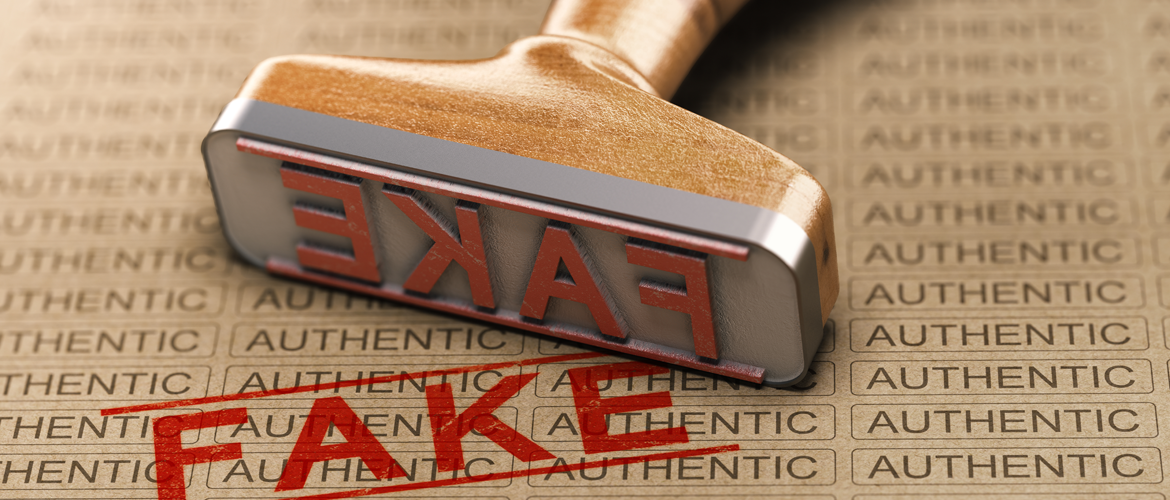The rapid advancements and utilization of new technologies is simplifying everyone’s life, enabling us to do things quicker, more intelligently, and more efficiently. However, some people see this as being a way to exploit others. One instance of this is counterfeit electronic products and mechanical goods, parts and assemblies. As manufacturers and counterfeiters try to out-smart each other with their respective detection and concealment efforts, costs and risk increase as a result. Instead, we should be considering ways to prevent counterfeiting and stop this cycle before a severe problem occurs.
A majority of people are worried about the growing number of counterfeit goods entering the market. One reason for this, is that more businesses, after learning about the issue, began checking for, and uncovering, counterfeit material inside their operations. Finding counterfeit material is not limited to new materials. Even back in the 1970s there are instances cited which include specialist materials warehoused. Zero defect products are required more and more as electronic and electro-mechanical products play a more critical role in our lives. If the entrance of counterfeit material is not stopped it will possibly be catastrophic.
There are a lot of different ways to counterfeit, such as, materials designed explicitly to be used in place of genuine parts, including those that are of lesser quality or have reached their end of life, which are then advertised and portrayed as higher value materials. Identifying counterfeit goods with increasingly sophisticated state of the art technology, in itself, only encourages counterfeiters to find better ways to hide their products. We already see this, where only the first hundred or so of one thousand on a reel of SMT components are actually genuine and then every seventh one is fake, a scheme specifically used to pass incoming material inspections. Constructing reels that are so intricate is probably automated and very easy to maintain.
Behind all of these activities are actual people, who are assessing and evaluating where they can profit, without being discovered. In order to stay in business, counterfeiters must go unnoticed. The more light that is shone on their ways, the higher the chances that steps may be taken to finding out where counterfeit materials entered, increasing their risks, and lessening their profits. Only a small portion of counterfeiters are out to ruin certain products, but they do not care about the repercussions of their actions, which is an awfully dangerous position.
As human beings, no matter who you or where you come from, we are all inclined to test our luck and attempt to "beat the odds" on a daily basis. For example, while driving on a 55-mph speed limit road some may try to see how much above the speed limit they can go without getting caught. One person may do 60 mph while another goes much faster without any regard for the safety of others. There are not many people that abide by every single rule all the time.
Looking at the speeding example of, thanks to technology, there are devices being used that are very successful at reducing the urge to speed, or even trying to beat the yellow light. Traffic cameras have sort of become a game changer. As long as we think that every traffic camera will potentially catch any serious violations, whether it is speeding, or going through a red light, we act accordingly. In order to stop the increasing number of counterfeit materials being introduced, we need to use technology to have the same effect. We need a means that will not only bring the counterfeit activity to light, but will also create a strong consequence for the action. In regards, to traffic cameras, a picture is captured of the license plate number and the owner of the vehicle must disclose who was driving when the violation occurred. When it comes to counterfeit materials, it is the responsibility of the previous “owners”, not the present owner of the products. Tamper proof packaging and a tracking system needs to be used, beginning with the original part manufacturer and throughout every touch point of entire supply-chain process. If any package is believed to have been manipulated it can be traced back to the last touchpoint and the citation can be issued to the responsible party. Employing block-chain technology guarantees that such documentation is unable to be changed. The supply-chain can be a very complicated sequence of events, which is exactly what the counterfeiters look for to take advantage. Standard guidelines need to be put in place which can be adopted no matter what technology or software system is being used, since many secure supply-chains operate in the same manner and have very similar needs.
As the last step to a secure and protected supply chain, precise traceability is required through the entire assembly process. A majority of resources are produced and delivered in bulk and are unable to be labeled and tracked individually. If this is the case, as soon as the secure package is opened at the plant, the distribution and consumption of the contents must be tracked. Should any items then found to be or suspected as being counterfeit, or in fact have a defect, the source can unequivocally be tracked back to the exact delivery container, and therefore throughout entire history of the supply-chain process. Such precise traceability of goods, including correct management of consumption and spoilage, is achieved as almost a secondary result of most modern digital MES applications. When equated to the possible costs of the consequences of not being able to prevent counterfeit products and fake goods from entering the market, achieving precise traceability costs very little and the benefits are limitless.
Sign up for our blog
Stay up-to-date on the latest in manufacturing trends, insights and best practices.





